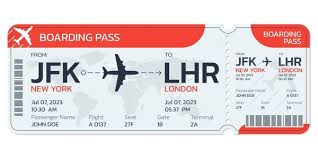In the modern era of instant messaging apps, sms gateway social media platforms, and video calls, it’s easy to overlook the humble beginnings of SMS (Short Message Service). Yet, SMS has been a cornerstone of communication for decades, evolving from its rudimentary origins to become a vital tool for personal and professional interaction worldwide.
The Birth of SMS
SMS was born out of the necessity to transmit short, text-based messages over cellular networks. It was originally conceptualized as a part of the GSM (Global System for Mobile Communications) standard in the 1980s. Engineers sought a way to utilize the signaling channels used for control and operation of the network to send short alphanumeric messages between mobile devices.
Early Days and Limitations
When SMS was first introduced commercially in the early 1990s, it faced several limitations. Messages were restricted to a maximum of 160 characters, primarily due to technical constraints within the signaling protocols. Additionally, interconnection between different networks was often not available, limiting the reach of SMS communication.
The Rise of SMS
Despite its limitations, SMS quickly gained popularity. Its simplicity, ubiquity, and cost-effectiveness made it an attractive option for communication, particularly when compared to the relatively high costs of making voice calls. As mobile phone ownership soared globally, SMS became the preferred method for quick, asynchronous communication.
SMS in the Digital Age
The turn of the century saw a significant expansion in the capabilities of SMS. Innovations such as concatenated messages, which allowed longer messages to be split and reassembled on the recipient’s device, addressed the character limit issue. Interconnection agreements between mobile operators enabled cross-network communication, further enhancing the reach of SMS.
Beyond Personal Communication
While SMS initially gained popularity as a tool for personal communication, its versatility soon led to its adoption in various other domains. Businesses began to utilize SMS for marketing, customer service, and authentication purposes. Governments and organizations employed SMS for emergency alerts and notifications, leveraging its ability to reach a wide audience rapidly.
Challenges and Adaptation
Despite its enduring popularity, SMS has faced challenges in the face of newer communication technologies. Over-the-top (OTT) messaging apps, such as WhatsApp and Messenger, offer richer features and multimedia capabilities, posing a threat to traditional SMS services. However, SMS has adapted to remain relevant, with advancements such as RCS (Rich Communication Services) introducing features like group chats, read receipts, and multimedia messaging.
The Future of SMS
Looking ahead, SMS continues to evolve in response to changing consumer preferences and technological advancements. Integration with other communication channels, such as email and social media, is becoming increasingly common, offering users seamless connectivity across platforms. Moreover, innovations in security and privacy are enhancing the trustworthiness of SMS for sensitive transactions and communications.
Conclusion
From its humble beginnings as a simple text-based messaging service, SMS has evolved into a ubiquitous communication tool that transcends geographical and cultural boundaries. Despite facing competition from newer technologies, SMS remains a cornerstone of modern communication, valued for its simplicity, reliability, and global reach. As technology continues to advance, SMS will undoubtedly continue to adapt and thrive, ensuring its place in the ever-changing landscape of communication.


